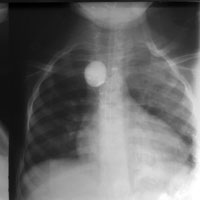A letter from John and Gwenda Fletcher serving in the Democratic Republic of the Congo
August 2016
Write to John Fletcher
Write to Gwenda Fletcher
Individuals: Give online to E200529 for John and Gwenda Fletcher’s sending and support
Congregations: Give to D501278 for John and Gwenda Fletcher’s sending and support
Churches are asked to send donations through your congregation’s normal receiving site (this is usually your presbytery).
The little 3-year-old, whom I will call Bakatuseka, was in a proper fix—she had swallowed a stone! She could hardly breathe, she couldn’t get it to come back up, she couldn’t vomit it out, and now she couldn’t swallow anything, not even water. Her mother was beside herself with concern. Where could she go for help and treatment?
Health care in the DR Congo is far from what it is in the U.S.A. There are primary health centers in many villages, but they are able to provide only very basic services such as uncomplicated deliveries, care for minor cuts or injuries and routine medications. The nearest hospital (in Congo generally referred to as a “Regional” hospital) will have more capabilities, but generally will still be capable of only very basic care, will have very little equipment and staff with very limited training. The next level of care would be a “Reference Hospital,” which is the top level of care in that health zone. Despite the expectation that the “top level of care” will be a good level of care, most reference hospitals lack many of the things that are needed to deliver proper medical care. These include radiology services, running water, electricity, specialty trained staff, proper anesthesia machines…and the list goes on. Good Shepherd Hospital is a reference hospital for the Tshikaji Health Zone, but it is a truly exceptional reference hospital because it has 24-hour electricity as well as running water, and significant equipment such as autoclaves, patient-monitoring capability, an oxygen-generating plant, basic radiology facilities, basic endoscopy services, and it has a few specialty trained physicians.
How did this happen to Bakatuseka? She had found a delightful round-oblong smooth-surfaced stone, a little like an egg, which was almost an inch in diameter. She had taken to putting it in her mouth. Imagine her surprise and horror when suddenly she was bumped by someone and she accidentally swallowed the stone! Her mother took her to a nearby Catholic Health Center, where she was seen by a nun, Sister Celene. Coincidentally, I had come to know Sister Celene some years ago when a graduate of our IMCK School of Laboratory Technology was hired to work at the Catholic center. Because I knew the graduate quite well, he suggested that Sister Celene come to me when their clinic encountered some technical problems as well as various clinical surgical problems. So, it was not a surprise that when Bakatuseka was brought to her health center with this problem of the swallowed stone, Sister Celene brought the child to Good Shepherd Hospital. Bakatuseka swallowed the stone in December 2015, soon after Gwenda and I had returned to the U.S.A. for our period of Interpretation Assignment (IA). Neither of the physicians that I have been training felt able to tackle the problem.
On the X-ray the stone was seen to be lodged in the upper chest and could present serious problems. In the U.S.A. this problem can generally be dealt with easily and non-surgically with an endoscope and some kind of wire basket, but that equipment was not available. That left only surgical options, which can be very challenging and no one felt able to undertake the surgery. A visiting Congolese Professor of Surgery from Kinshasa was consulted but decided he could not properly address the problem. So, if you can imagine it, Bakatuseka was left to cope with having this large stone in her esophagus! Thankfully, someone was able to pass a nasogastric (feeding) tube past the stone and into Bakatuseka’s stomach enabling her to receive food through the tube.
It wasn’t until June 2016 that Gwenda and I arrived back at Good Shepherd Hospital, and Sister Celene and Bakatuseka were waiting to see me! We were able (with some struggles) to remove the stone from little Bakatuseka’s esophagus through her mouth. That was possible only because we have capable, locally trained nurse anesthetists, anesthesia machines, an oxygen-generating facility, and a variety of equipment that made the procedure possible even if it was not as straightforward as it might have been in the U.S.A.! (For those of you with some medical knowledge, we fabricated a large enough stone basket using stainless steel suture material, I used a rigid esophagoscope, but had to use a cystoscopic telescope inside the esophagoscope for light and vision, and then we were able to pass the stone basket, position it and slowly remove the stone.) Bakatuseka did just fine and we were glad to see her back a week later doing well, smiling and swallowing without any problem.
We praise and thank the Lord that He provided us with the personnel, equipment and supplies that could be used to care for one of His little children. There are plenty of challenges here in the DR Congo, so we celebrate with great joy the small victories.
Gwenda and I join in thanking you for your faithful support of our participation in God’s mission in the DR Congo. Without your support we could not be here.
Blessings in Christ,
John and Gwenda
![]() You may freely reuse and distribute this article in its entirety for non-commercial purposes in any medium. Please include author attribution, photography credits, and a link to the original article. This work is licensed under a Creative Commons Attribution-NonCommercial-NoDeratives 4.0 International License.
You may freely reuse and distribute this article in its entirety for non-commercial purposes in any medium. Please include author attribution, photography credits, and a link to the original article. This work is licensed under a Creative Commons Attribution-NonCommercial-NoDeratives 4.0 International License.


